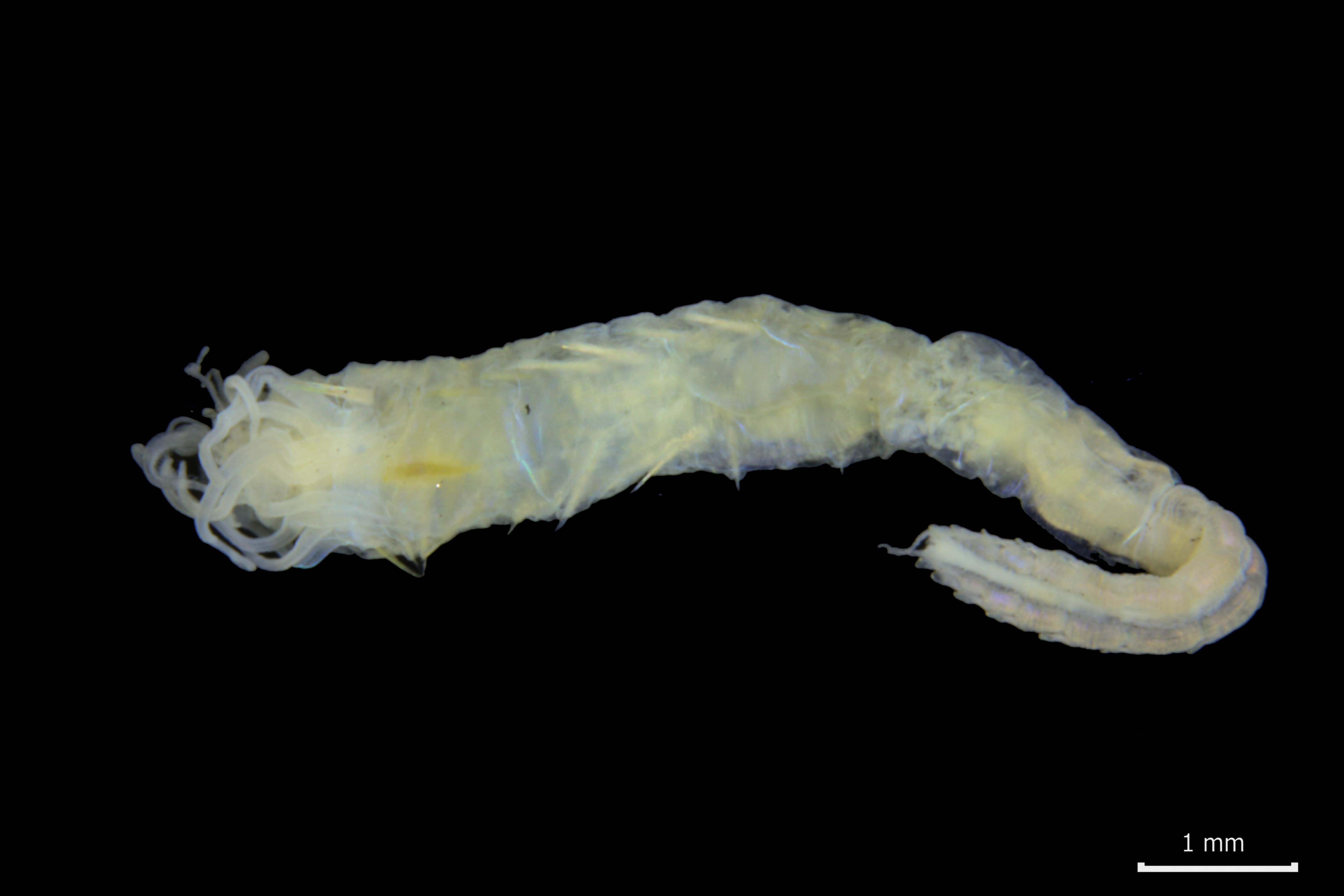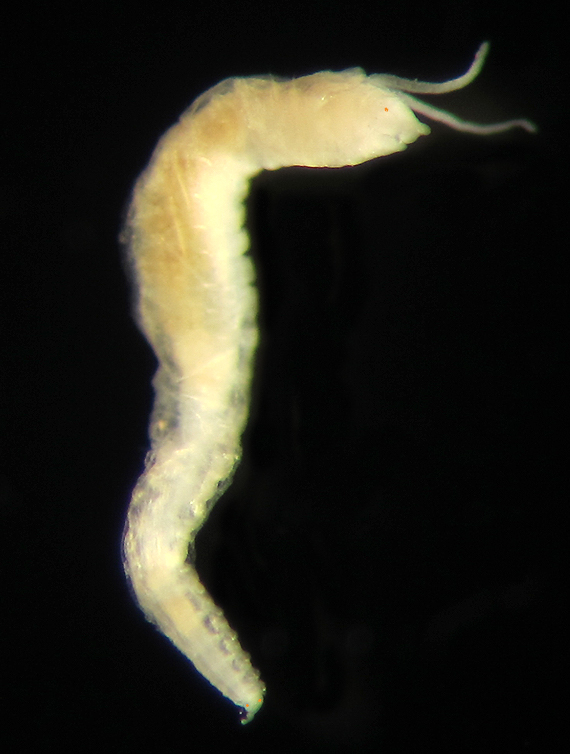Meet the Scottish Sea Worm with Eyes on Its Butt

Some people claim to have eyes in the back of their head. Perhaps just as useful, a new marine worm discovered off the coast of Scotland has eyes in the back of its butt.
The cheeky little worm, described for the first time in the June issue of the European Journal of Taxonomy, is called Ampharete oculicirrata, the latter part of its name referring to the pair of beady black eyes (or "oculi") on the worm's cirri — tiny, tentacle-like blobs poking out of the creature's bum. (To be fair, the worm also has a pair of eyes near its mouth, but "Ampharete head-eyes" makes for a slightly less interesting name.) [Deep-Sea Creepy Crawlies: Images of Acorn Worms]
Researchers discovered the worm while collecting sandy seafloor samples from the West Shetland Shelf Marine Protected Area just north of Scotland, which is thought to be an untapped hotspot of biodiversity. Within 50-odd scoops of sand taken from around 400 feet (120 meters) below the water's surface, the team found more than 80 worm specimens. Each one measured 0.15 to 0.2 inches (4 to 5 millimeters) long, on average — roughly the width of a No. 2 pencil eraser.
Like other polychaetes (a class of segmented marine worm), A. oculicirrata is a bottom-feeder, which is well illustrated by the tangle of food-snatching tentacles near its mouth. As for the butt eyes? It's not uncommon for polychaetes to host multiple sets of eyes along their wriggly little bodies (having a dispersed visual network can help marine worms better detect the shadows of predatory fish); but, according to the study authors, A. oculicirrata's posterior peepers are relatively rare among its closest relatives.
According to representatives from the Joint Nature Conservation Committee, a U.K. conservation group that partially funded the study, the discovery of this odd worm so close to the Scottish mainland is further evidence of the diverse life lurking in the sandy habitats of the West Shetland Shelf. Keep your eyes — posterior or otherwise — on this space for future discoveries.
- Marine Marvels: Spectacular Photos of Sea Creatures
- In Photos: Wonders of the Deep Sea
- Image Gallery: Rich Life Under The Sea
Originally published on Live Science.
Get the world’s most fascinating discoveries delivered straight to your inbox.

Brandon is the space / physics editor at Live Science. With more than 20 years of editorial experience, his writing has appeared in The Washington Post, Reader's Digest, CBS.com, the Richard Dawkins Foundation website and other outlets. He holds a bachelor's degree in creative writing from the University of Arizona, with minors in journalism and media arts. His interests include black holes, asteroids and comets, and the search for extraterrestrial life.



